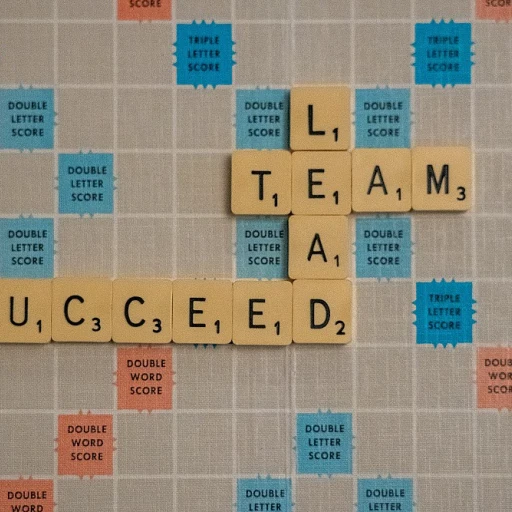
Understanding the Unique Demands of Technical Roles
The Complexity of Technical Hiring Demands
In today's rapidly evolving technology landscape, understanding the unique demands of technical roles is crucial for companies navigating the hiring process. As digital technologies continue to reshape workplaces, the demand for skilled technical workers grows exponentially. Companies and recruitment teams must adapt to these changes to attract and retain top talent in these competitive environments. One of the primary challenges is identifying the precise blend of technical skills and experience needed for specific roles. Unlike more general positions, technical jobs often require a nuanced understanding of complex systems, programming languages, and data management. Technical workers are expected to possess an array of competencies that allow them to thrive in a digital workplace. Moreover, as teams increasingly rely on workplace technology and real-time communication tools, employers must identify candidates who are adaptable and well-versed in these systems. Beyond the myriad of skills, the cultural fit within the organization is equally important. Companies need team members who can seamlessly integrate into their existing work culture, contributing not only their technical prowess but also their ability to effectively communicate and collaborate with non-technical colleagues. Strong interpersonal skills can enhance overall employee experience and productivity. The technical workforce is also shaped by a wide array of factors, including data privacy regulations and the interplay of artificial intelligence and social media in the workplace. Companies must keep abreast of these evolving trends to ensure their hiring strategy remains effective. This requires an ongoing evaluation and adjustment of hiring approaches to address potential biases and promote diversity in the workplace. Navigating these complexities demands a strategic approach to not only attract and assess the right candidates but also retain them in a satisfactory work environment. The inability to do so can lead to a constant revolving door of employees, resulting in increased costs and disruptions for the company. By truly understanding the multifaceted nature of technical roles, organizations can better align their hiring strategies with their overall business objectives.Crafting Effective Job Descriptions for Technical Positions
Creating Clear and Impactful Job Listings
Crafting effective job descriptions for technical positions is a crucial step in attracting the right talent. The technical workforce operates with specific demands that require clarity and depth in how roles are presented to potential candidates. A well-crafted job description functions as a strategic tool to communicate with prospective employees. It clearly outlines the necessary technical skills, experience level, and expectations, ensuring there is no ambiguity in the roles advertised. Here are some key considerations:- Detail the Technical Skills: Start by listing specific technical skills required. Whether your team needs expertise in digital technologies, artificial intelligence, or technical communication systems, clarity will help match job seekers with the right abilities to your needs.
- Highlight Company Culture and Values: It's essential to illustrate the cultural aspects of your workplace. Technical workers not only consider the job itself but also the environment—how workplace technology fosters collaboration or how team members are supported in their roles.
- Include Data Privacy and Management Elements: In technology-centric roles, data privacy and management systems are often core components. Make sure to mention how your company's practices support these areas, which is particularly important in roles that deal with sensitive information.
- Showcase the Impact: Describe how this position contributes to the company's success. Explaining the impact of the role can attract candidates interested in making a difference and not only those equipped with the necessary skills.
- Emphasize Development Opportunities: Highlight opportunities for learning and growth within the company, utilizing the digital workplace and workplace technologies to enhance skills over time. A transparent path for development can be a strong selling point.
Sourcing Candidates in a Competitive Market
Sourcing Candidates in a High-Stakes Industry
In the tech industry, the search for top talent can feel like a race against time. The demand for individuals with specialized technical skills far exceeds the available pool of qualified candidates. Companies that succeed in technical environments do so by adopting innovative sourcing strategies that go beyond traditional job postings.
Embrace Digital Platforms: Utilizing various digital technologies and social media platforms can greatly expand your reach. Platforms like LinkedIn, GitHub, and Stack Overflow are frequented by technical workers and can serve as valuable resources for identifying potential candidates. Engaging with communities on these platforms allows hiring managers to identify individuals who demonstrate a real passion for technology.
Developing a Talent Pool: Investing time into building a strong talent pool is essential. This might involve continuous engagement with potential future candidates through newsletters, workshops, or attending industry conferences. Such efforts help keep your company on their radar when they're ready to look for a new place to work.
- Partner with educational institutions to tap into emerging talent pools.
- Leverage management systems to track potential candidates and streamline the hiring process.
Data-Driven Approaches: With the rise of artificial intelligence and workplace technologies, more companies are adopting data-driven approaches to streamline their recruitment processes. Analyzing data, such as application trends and candidate feedback, helps refine recruitment strategies over time and ensure that they align with the company's evolving needs.
Ultimately, by harnessing the power of technology, companies can not only find qualified candidates faster but also improve the overall employee experience in the digital workplace.
Evaluating Technical Skills and Cultural Fit
Assessing the Technical Prowess in Candidates
Evaluating technical skills and cultural fit is a critical component in building a successful technical workforce. Given the rapid evolution of technologies in the digital workplace, it’s crucial to adopt a nuanced approach to gauge the competencies of potential employees. The challenge lies not just in quantifying technical skills but also in ensuring that candidates can thrive within the company’s culture.- Technical Acumen: Candidates should be assessed for a wide range of technical abilities that match the specific requirements of the job. Utilizing both practical tests and real-time problem-solving scenarios allows hiring managers to observe how potential employees navigate complex technical challenges. This holistic approach helps ensure that the skills align with the needs of the technical workplace.
- Cultural Compatibility: While technical expertise is essential, it must be complemented by a cultural fit within the team. Evaluating a candidate's compatibility with the workplace ethos can be achieved through targeted interview questions that probe not only technical communication skills but also values and adaptability.
- Leveraging Digital Tools: To streamline the evaluation process, companies can employ digital technologies and management systems that enhance the hiring experience. These systems provide data-driven insights into a candidate’s capabilities, facilitating a more efficient selection process.
- Feedback Mechanism: Implementing a feedback loop with current team members can help refine candidate evaluation techniques. Engaging team members in the hiring process ensures that new hires will integrate smoothly into the existing work culture.
Addressing Bias and Promoting Diversity
Fostering an Inclusive Technical Environment
In today’s technology-driven world, fostering an inclusive environment in the workplace is essential. A diverse team not only brings varied perspectives but also enhances problem-solving capabilities and creativity. Therefore, it is crucial for companies to address bias in the hiring process and actively promote diversity within their technical teams.
To create an inclusive technical work environment, consider the following strategies:
- Implement Training Programs: Regular training on unconscious bias can help employees and management recognize and mitigate bias in the workplace. This training should focus on affecting both recruitment processes and daily interactions among team members.
- Utilize Technology Wisely: Leverage digital technologies that promote unbiased hiring. For instance, some companies use artificial intelligence to screen resumes and remove identifying information, ensuring candidates are evaluated based on their skills and experience alone.
- Review Job Descriptions: Craft job descriptions with inclusive language to appeal to a broader range of candidates. It’s essential for technical positions to highlight the company's commitment to a diverse work environment, encouraging applicants from various backgrounds to apply.
- Encourage Diverse Perspectives: Foster a workplace culture where all employees feel valued and empowered to share their ideas. Regularly hold team meetings that emphasize open communication and encourage team members to contribute their unique insights.
- Measure and Track: Utilize data to track diversity within the technical workforce. By analyzing recruitment and retention metrics, companies can identify trends and areas for improvement, adjusting strategies as needed to promote an inclusive environment.
Creating a diverse technical workforce is an ongoing effort that requires commitment from every level of the organization. By prioritizing inclusivity, companies can enhance their employee experience and foster an environment where all workers thrive. This approach not only benefits individual employees but also strengthens the organization as a whole, paving the way for more innovative solutions and a stronger company culture.
Retaining Talent in the Technical Workplace
Creating a Supportive Environment for Talent Retention
Retaining talent in the ever-evolving world of technology requires more than just competitive salaries. It's about creating an environment that supports and nurtures employee growth, fosters open communication, and embraces new technologies. To enhance the employee experience, companies should focus on:- Continuous Learning Opportunities: Providing access to digital technology resources, training programs, and mentorship can help employees enhance their technical skills. This commitment to development not only benefits workers but also boosts the company’s overall technical capabilities.
- Strong Company Culture: Building a culture that encourages collaboration and innovation can lead to higher job satisfaction. Team members who feel valued and part of a forward-thinking community are more likely to stay.
- Flexible Work Arrangements: Incorporating remote work options and flexible hours can improve work-life balance, helping technical employees manage their time effectively. This flexibility can stem from workplace technologies and management systems that enable seamless communication and collaboration.
- Recognition and Rewards: Acknowledging achievements and providing real-time feedback is crucial. Recognition can be as simple as a shout-out in team meetings or as significant as performance bonuses that underscore the value placed on their contributions.
- Data Privacy and Security: With the increasing reliance on digital technologies, ensuring data privacy is paramount. Employees need assurance that their data is protected, which can bolster their trust in the company.
- Inclusive Environment: Promoting diversity and inclusivity is key. People work best in environments where they feel their voices are heard, regardless of their background.












